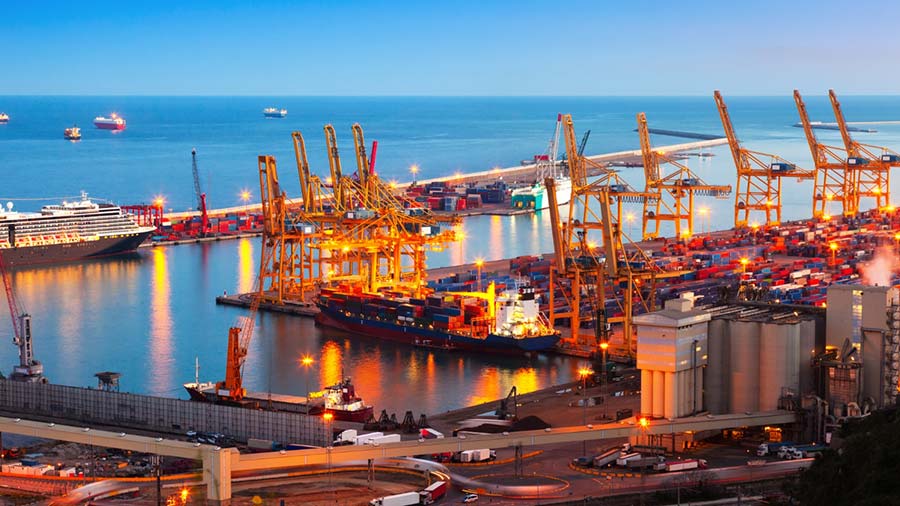Thailand’s position as a manufacturing and logistics hub makes customs management a central factor in investment and supply-chain decisions. In 2024, Thailand recorded US$300.53 billion in exports and US$306.81 billion in imports, reflecting its high trade integration within global supply networks. For foreign companies, the ability to align free trade agreements (FTAs), tariff classification, and duty recovery mechanisms determines not only compliance efficiency but also margin stability.
Related Reading
These instruments operate best when used together as a single cost-management system. By integrating them within a coordinated framework, companies can achieve both regulatory certainty and predictable landed costs in Thailand’s trade environment.
Understanding Thailand’s customs environment
Thailand’s customs framework operates under the Customs Act B.E. 2560 (2017), administered by the Thai Customs Department under the supervision of the Ministry of Commerce. The Act modernized valuation, classification, and post-clearance audit procedures, replacing the 1926 law.
Digital reforms such as the National Single Window and the electronic certificate of origin (e-CO) platform have accelerated customs processes and improved traceability. These systems enable businesses to integrate trade documentation with enterprise resource planning tools and monitor import and export flows in real time.
Thailand participates in ASEAN, the Regional Comprehensive Economic Partnership (RCEP), and bilateral trade agreements with Japan, China, Australia, and India. Each framework offers different tariff concessions and documentation requirements, making the choice of mechanism dependent on a company’s sourcing model and compliance capability.
Using FTAs and HS classification for tariff advantage
Effective duty planning begins with precise product classification under the ASEAN Harmonized Tariff Nomenclature (AHTN 2022), which determines base duty rates, licensing requirements, and eligibility for preferential treatment. Where uncertainty exists, importers may request a binding tariff classification ruling from Thai Customs before importation to ensure certainty and avoid reassessment.
Preferential tariff rates apply when goods meet the rules of origin (ROO) established under an FTA and are accompanied by a certificate of origin, such as Form D under ASEAN or Form AJ under ASEAN–Japan. Rules of origin vary by product and agreement, covering criteria such as regional value content or change in tariff heading. Businesses should apply the specific product rule rather than rely on generic thresholds.
When production relies heavily on regional inputs, FTA use can reduce or remove tariffs with manageable documentation requirements. When supply chains depend on global sourcing or record-keeping is inconsistent, paying the Most Favored Nation (MFN) rate may be safer to avoid post-clearance reassessment.
Find Business Support

Under the 2017 Customs Act, misclassification or unsupported origin claims can attract penalties of up to four times the unpaid duty and possible seizure of goods. For firms with regular shipments, linking HS codes and FTA eligibility within automated systems helps maintain compliance and capture savings sustainably.
Choosing between duty drawback and duty suspension
Thailand allows duty drawback for imported inputs used in export production under Section 19 bis of the Customs Act, administered by the Duty Drawback and Compensation Division. To qualify, companies must demonstrate a traceable link between import entries, production records, and export documentation. Claims must be submitted within prescribed timelines, and refunds are issued once Customs verification is complete.
Where liquidity or mixed domestic and export sales are key concerns, free zones and bonded warehouses permit duty suspension until goods enter the domestic market. These facilities fall under Thai Customs supervision and, in some cases, align with Board of Investment (BOI) or industrial-estate programs.
The choice between refund and suspension depends on a firm’s export ratio, documentation discipline, and cash-flow needs. Export-heavy manufacturers often gain more from duty drawback, while regional distributors may benefit from deferred-duty schemes. Firms should evaluate refund lead times and administrative costs against deferred-payment advantages using their internal production and logistics data.
Integrating Customs Strategy with Business Operations
Manufacturers with investment promotion can combine preferential tariffs with drawback mechanisms where exported goods meet both BOI and Customs requirements. Importers and distributors outside the BOI regime should maintain strict classification governance and complete origin records to minimize audit exposure under Thailand’s risk-based inspection system.
Find Business Support

For multinational enterprises using Thailand as a regional logistics base, Free Zone and Bonded Warehouse structures offer the flexibility to consolidate imports, defer duties, and re-export throughout ASEAN. In 2024, total U.S.–Thailand goods trade reached US$81.2 billion, reflecting the strategic scale of Thailand’s role as a regional manufacturing and re-export hub. The most efficient customs configuration depends on a combined assessment of landed cost, refund timing, audit risk, and administrative capacity.
Properly designed, customs management functions as a form of operational governance, aligning compliance with financial control.
Sustaining compliance and governance
Customs compliance in Thailand demands continuous oversight. Annual reviews of tariff classifications, verification of rules of origin, and ongoing updates to internal systems are necessary as trade agreements evolve. Maintaining complete digital archives of import, origin, and refund documentation enables a rapid response to audit inquiries. Cooperation with licensed Thai customs brokers and trade advisors supports accuracy in submissions and ensures alignment with current procedures.
Proactive governance preserves transparency with authorities and enables foreign investors to sustain predictable cost structures as Thailand’s trade environment continues to evolve under regional integration. Effective customs governance ultimately protects both compliance integrity and profit margins.
About Us
ASEAN Briefing is one of five regional publications under the Asia Briefing brand. It is supported by Dezan Shira & Associates, a pan-Asia, multi-disciplinary professional services firm that assists foreign investors throughout Asia, including through offices in Jakarta, Indonesia; Singapore; Hanoi, Ho Chi Minh City, and Da Nang in Vietnam; and Kuala Lumpur in Malaysia. Dezan Shira & Associates also maintains offices or has alliance partners assisting foreign investors in China, Hong Kong SAR, Mongolia, Dubai (UAE), Japan, South Korea, Nepal, The Philippines, Sri Lanka, Thailand, Italy, Germany, Bangladesh, Australia, United States, and United Kingdom and Ireland.
For a complimentary subscription to ASEAN Briefing’s content products, please click here. For support with establishing a business in ASEAN or for assistance in analyzing and entering markets, please contact the firm at asean@dezshira.com or visit our website at www.dezshira.com.
